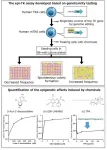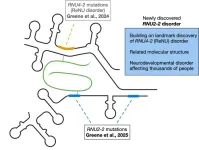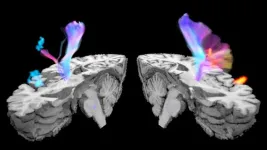(Press-News.org)
Chemicals used as food preservatives, flavoring agents, dyes, pesticides, cosmetics, cleaners, and other industrial materials are being increasingly recognized as a health hazard. Their rampant use has led to an increase in the prevalence of various chemical toxicity-induced diseases, including hormonal disruption, cancer, neurological disorders, skin conditions, and occupational poisoning. Numerous chemicals are known to trigger “carcinogenesis” or cancer development by exerting genotoxic effects (direct or indirect interference with DNA replication and damage repair processes resulting in mutations and chromosomal aberrations). Various in vitro genotoxicity assays help assess the interactions of potential carcinogens with DNA and elucidate their role in health and disease.
In addition to genotoxicity, epigenetic alterations, or reversible changes to DNA and chromatin (packaged DNA-protein complexes) have been implicated in chemically induced carcinogenesis. Typically, DNA methylation, the addition of methyl groups to DNA, silences gene expression. Conversely, acetylation (addition of acetyl groups) of histones, the proteins that bind DNA, opens up the chromatin structure, making DNA accessible for transcription. Such dynamic epigenetic alterations in DNA and histones regulate gene expression in a cell- and tissue-specific manner. Notably, environmental chemicals such as bisphenol A, arsenic, cadmium, benzene, pesticides, and other carcinogens have been reported to induce aberrant epigenetic changes in various diseases. Unraveling the mechanisms underlying chemical-induced epigenetic alterations can aid the safety assessment of environmental chemical compounds.
Cell-based assays that have been previously developed, detect epigenetic changes in a unidirectional manner (inactivation/reactivation of gene expression) based on the baseline status of the reporter gene and do not fully capture chemical-induced epigenetic alterations. A flexible, bidirectional assay needs to be developed to effectively detect diverse epigenetic impacts of chemical exposure in human cells.
To resolve this issue, Associate Professor Akira Sassa along with Professor Kiyoe Ura from the Graduate School of Science, Chiba University, Japan, and Manabu Yasui and Kei-ichi Sugiyama from the National Institute of Health Sciences, Japan, have developed a novel epi-genotoxicity assay to evaluate carcinogen-induced epigenetic changes.
Explaining the scientific rationale behind their work published in Scientific Reports on March 5, 2025, Assoc. Prof. Sassa says, “In the field of genome biology, mastering epigenetic analysis techniques is both challenging and costly, making it difficult to use in the safety assessment of chemicals. This led us to consider developing a universally accessible method through collaborative research across academia, industry, and government. Elucidation of previously unknown epigenetic mechanisms of chemical carcinogenesis can aid safer chemical use worldwide, including in developing countries.”
Thymidine kinase (TK) gene mutation assay (TK assay) is a conventional in vitro genotoxicity test that detects mutations in the TK gene locus, an essential housekeeping gene expressed by all cell types. The researchers previously enhanced the TK assay and improved its detection sensitivity for the safety assessment of pharmaceutical, industrial, agricultural, and environmental chemicals with potential genotoxic and cytotoxic effects. In the current study, they have further developed an epi-TK reporter assay by site-specifically methylating the TK promoter region.
They assessed the capability of the epi-TK assay to reflect global epigenetic changes by quantifying “TK reversion” or the expansion of cells with a methylated (silenced) TK promoter following treatment with inhibitors of DNA methyl transferases (DNMTs) with well-characterized mechanisms of action to elucidate the potential of the system to reflect epigenetic changes.
Notably, treatment with DNMT inhibitors resulted in unmethylated sites within the TK promoter region and expansion of TK revertant colonies. Additionally, treatment with 12-O-tetradecanoylphorbol-13-acetate (TPA), a widely studied non-genotoxic seed oil-derived carcinogen, led to a significant decrease in TK revertant frequency and histone acetylation levels. The epi-TK assay could thus reflect epigenetic changes associated with both gene silencing and activation.
Contrary to advanced sequencing analysis that requires expensive reagents and instruments, along with specific technical and analytical expertise, the epi-TK reporter assay developed in this study offers a simpler, cost-effective, and quantitative approach to evaluate chemical epi-genomic toxicity.
Assoc. Prof. Sassa concludes by saying, “Our research can enhance the understanding of the impact of chemicals on public health and disease prevention, thereby promoting safer management and use of chemicals. Understanding the relationship between environmental chemicals and diseases, and improving chemical safety evaluations, can aid the implementation of measures to reduce the exposure to harmful chemicals in both work and living environments.”
About Associate Professor Akira Sassa
Akira Sassa is an Associate Professor at the Graduate School of Science, Chiba University, Japan. He completed his doctoral studies at the Tokyo University of Pharmacy and Life Sciences. His research interests include genome biology and biochemistry, molecular mechanisms of genome instability and repair, and mechanisms of chromatin regulation. He is a council member of the Japanese Environmental Mutagen and Genome Society. Assoc. Prof. Sassa has authored several publications spanning genome biology, epigenetics, genotoxicity, and DNA mutations.
END
Scientists writing a policy forum article in the CABI One Health journal say the “plant world” needs to come out and claim its place at the One Health table as part of a desire to break down barriers that currently limit true cross-domain integration.
The researchers say that while plant health is increasingly recognized as a vital part of One Health, it lacks recognition and – historically focussed on health service provision, zoonotic diseases and antimicrobial resistance – One Health overlooks plant health in strategic plans.
They add that cross-sectoral approaches, core to One Health, are already used ...
Traumatic brain injury (TBI) is a serious issue affecting thousands of people in the U.S. every year. For military service members, the impact is even more profound. Since 2000, over 492,000 cases of TBI have been reported, making it one of the defining injuries of modern warfare, according to the U.S. Department of Defense. Many veterans have experienced multiple TBIs, raising concerns about long-term effects on brain health. Given the subjective and nonspecific nature of symptom presentation, treatment and prognosis can be difficult.
Researchers ...
The first few days of a human embryo’s development, known as pre-implantation, are important. It’s when the first cells are formed, and these decide if the embryo can survive, how it will implant in the womb and how the tissues of the fetus will develop.
Today there are still logistical, ethical and legal limitations to using human embryos for research purposes, so scientists use alternative models including stem cell-based and animal models.
In a new study published in Nature Cell Biology, Sophie Petropoulos, a researcher ...
Discussion of "alternative facts" has gained sad notoriety in US politics. Yet the question has been around much longer: How do people conduct political debates – is the focus more on facts or personal opinions? A team of international researchers led by the Cluster of Excellence "The Politics of Inequality" looked into the matter. The researchers examined political rhetoric in eight million speeches by members of the US Congress between 1879 and 2022 to see if the focus of their language was more on data and facts or personal convictions and subjective interpretations.
The team noticed a significant decline in the use of evidence-based political ...
Nursing poses major metabolic demands on mothers, to which they respond by eating more and saving energy to sustain milk production. There are significant hormonal changes during lactation, but how they lead to metabolic adaptations in nursing mothers remained unclear. In this study, which appeared in Nature Metabolism, leading researchers at Baylor College of Medicine and Pennington Biomedical Research Center uncovered a mechanism that connects prolactin, estrogen, the brain and metabolic adaptations during lactation.
“We worked with animal models to investigate ...
UNDER EMBARGO UNTIL THURSDAY 10 APRIL, 10AM LONDON TIME, 5AM EASTERN TIME.
Urgent action is needed to protect endangered species, human health and industry from the impacts of the Caspian Sea shrinking, research led by the University of Leeds has found.
Water levels in the Caspian Sea – the world’s largest landlocked water body – are getting lower, as hotter temperatures cause more water to evaporate than is flowing in. Even if global warming is limited to below 2°C, ...
New York, NY [April 10, 2025]—A seminal study from researchers at the Icahn School of Medicine at Mount Sinai and their collaborators in the United Kingdom, Belgium, Spain, the Netherlands, and Iceland has uncovered a new genetic cause of neurodevelopmental disorders (NDDs). The discovery offers both closure and hope to potentially thousands of families worldwide who have long been searching for answers.
The study, published in the April 10 online issue of Nature Genetics [DOI: 10.1038/s41588-025-02159-5], reveals that mutations in a small, previously overlooked non-coding gene called RNU2-2 are responsible for relatively common NDD. Non-coding genes ...
Researchers have created a “metal detector” algorithm called PRRDetect to hunt down vulnerable tumours, in a development that could one day revolutionise the treatment of cancer.
In a paper published today (Thursday 10th April) in Nature Genetics, scientists funded by Cancer Research UK and the National Institute for Health and Care Research (NIHR) analysed the full DNA sequence of 4,775 tumours from seven types of cancer. Based at the University of Cambridge and NIHR Cambridge Biomedical Research Centre, they used that data from Genomics England’s 100,000 Genomes ...
A new USC-led study using functional magnetic resonance imaging (fMRI) reveals the neural mechanisms that contribute to urinary incontinence, a common condition affecting stroke survivors that has a significant impact on their quality of life.
The research, just published in Stroke, was conducted by a multidisciplinary team of urologists, neurosurgeons, and imaging experts from the Keck School of Medicine of USC, Keck Medicine of USC, the Rancho Los Amigos National Rehabilitation Center, and the Shirley Ryan Ability Lab. The team discovered significant differences in brain activity during voluntary versus involuntary bladder contractions, presenting potential pathways for targeted therapies.
Urinary ...
Using eye-tracking — a technique for recording and analysing eye movements — a team from the University of Geneva (UNIGE) has shown that individuals with multiple disabilities can improve their social and emotional skills. Although these patients are often considered ‘‘untestable’’, nine young people have undergone personalised training over a period of one year, with promising results in terms of their ability to socialise. This work opens the way to new methods of assessment and support. It is published in Acta Psychologica.
Multiple disabilities involve a combination of severe intellectual and motor impairments, resulting in profound dependence. ...




